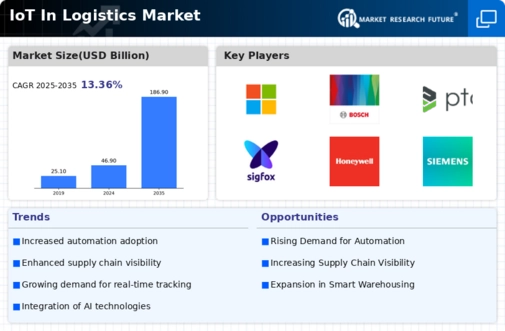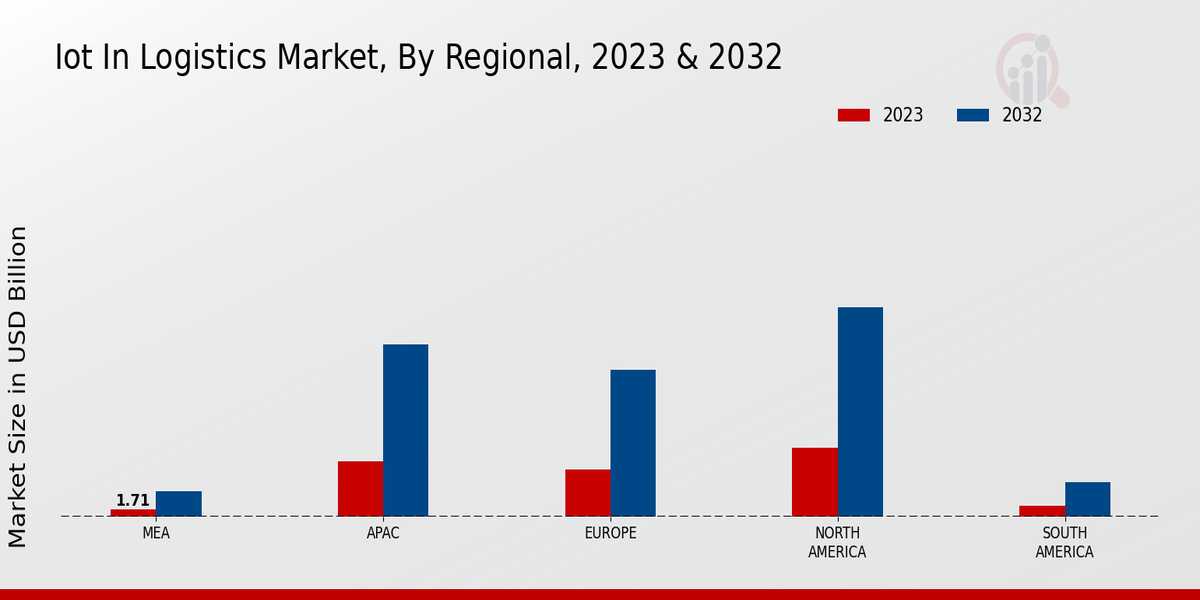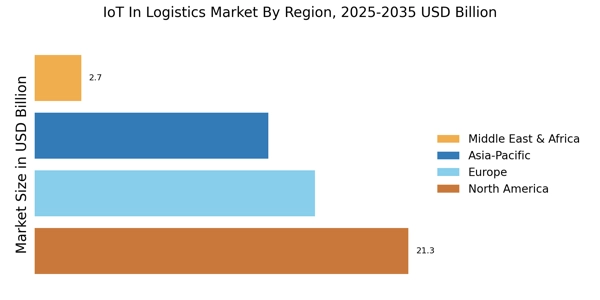Data-Driven Decision Making
In the IoT In Logistics Market, the emphasis on data-driven decision making is becoming more pronounced. The proliferation of IoT devices generates vast amounts of data, which can be analyzed to inform strategic decisions. Companies are leveraging this data to enhance inventory management, forecast demand, and improve customer service. Reports indicate that organizations utilizing IoT analytics can reduce inventory costs by approximately 20%. This capability to harness data effectively is likely to drive further investment in IoT technologies within the logistics sector.
Enhanced Operational Efficiency
The IoT In Logistics Market is witnessing a surge in demand for enhanced operational efficiency. Companies are increasingly adopting IoT solutions to streamline their logistics processes, which can lead to significant cost reductions. For instance, the integration of IoT devices allows for real-time tracking of shipments, reducing delays and improving delivery times. According to recent data, organizations that implement IoT technologies in their logistics operations can achieve up to a 30% increase in efficiency. This trend is likely to continue as businesses seek to optimize their supply chains and reduce operational costs.
Increased Demand for Real-Time Tracking
The demand for real-time tracking solutions is a pivotal driver in the IoT In Logistics Market. As consumers increasingly expect transparency regarding their shipments, logistics companies are compelled to adopt IoT technologies that provide real-time visibility. This trend is reflected in market data, which shows that the real-time tracking segment is projected to grow at a compound annual growth rate of over 25% in the coming years. By implementing IoT solutions, companies can enhance customer satisfaction and build trust, which is essential in a competitive market.
Sustainability and Environmental Concerns
Sustainability and environmental concerns are increasingly influencing the IoT In Logistics Market. Companies are recognizing the importance of reducing their carbon footprint and are adopting IoT solutions to optimize resource usage. For example, IoT technologies can help in route optimization, leading to lower fuel consumption and reduced emissions. Market analysis suggests that logistics companies implementing IoT for sustainability initiatives can achieve a reduction in emissions by up to 15%. This focus on sustainability is likely to drive further innovation and investment in IoT technologies.
Regulatory Compliance and Safety Standards
Regulatory compliance and safety standards are critical drivers in the IoT In Logistics Market. As governments worldwide impose stricter regulations on transportation and logistics, companies are turning to IoT solutions to ensure compliance. IoT technologies can facilitate monitoring of safety protocols and adherence to regulations, thereby reducing the risk of penalties. The market is expected to see a rise in IoT applications that focus on compliance, as organizations strive to meet these evolving standards while maintaining operational efficiency.



















Leave a Comment